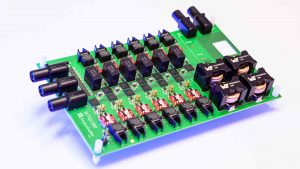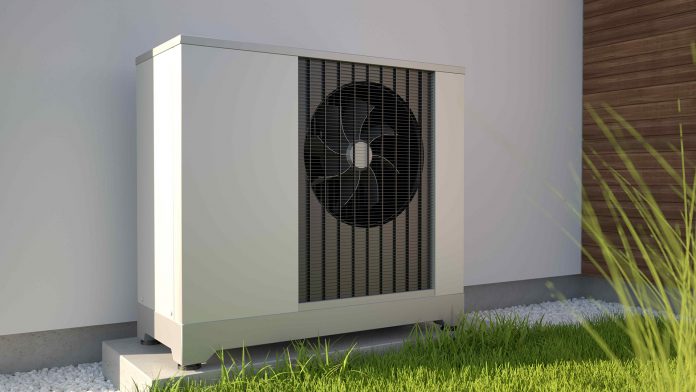A team of researchers from the Fraunhofer Institute are developing power electronics for heat pumps.
Using power electronics for heat pumps is a more efficient alternative to the currently prevailing compressor technology, as these new types of heat pumps promise higher efficiency and do not require refrigerants.
The researchers have now reached a milestone in power electronics, as their product has achieved an ultra-efficient circuit topology for voltage converters with over 99.74% electrical efficiency.
This result is a worldwide benchmark and an important step toward more efficient solid-state heat pumps.
The results of the study are further detailed in the journal IEEE Xplore.
The electrocaloric effect
The principle behind using power electronics for heat pumps is the electrocaloric effect.
The material heats up if an electrical voltage is applied to an electrocaloric material made of unique ceramics or polymers. As soon as the voltage is removed, the material cools down again, and the entire process is almost entirely reversible.
Since the electrocaloric materials form an electrical capacitance, the power electronics in the system have the task of electrically charging and discharging the electrocaloric capacitances several times per second as highly efficiently and loss-free as possible, with heat being pumped in each cycle.
The role of gallium nitride in achieving ultra efficiency
Due to their technology, today’s heat pumps achieve only about 50% of the physical Carnot limit, while using electrocaloric heat pumps can reach around 85%.

© Fraunhofer IAF
To develop the new heat pumps, the researchers constructed devices based on the semiconductor gallium nitride (GaN) to increase power density and efficiency.
The circuits based on GaN transistors are why the new heat pumps achieved such high energy efficiency.
The significant increase in efficiency of the drive electronics directly affects the coefficient of performance of the entire system. Until now, using power electronics for heat pumps has been limited by the losses of electronics, among other things.
The increased electrical efficiency leads directly to a higher coefficient of performance of the entire heat pump system. Therefore, it is a milestone for more efficient heat pumps.
Using power electronics for heat pumps has achieved record-breaking efficiency levels
The GaN-based multilevel DC/DC converter sets global standards and far exceeds the previous state of research of less than 90% conversion efficiency for electrical control of these novel heat pumps.
“Our use of electrocaloric heat pumps makes it realistic to achieve well over 50% of the maximum theoretical coefficient of performance, even at the system level,” explained Dr Stefan Mönch, a researcher in the field of power electronics at Fraunhofer IAF.
“There is still a lot of research to be done, but in future, this technology could become a more efficient and completely emission-free solution for heating and cooling.”
Dr Kilian Bartholomé, a researcher at the Fraunhofer Institute for Physical Measurement Techniques IPM, concluded: “Essential for realising a high coefficient of performance of electrocaloric heat pumps is a very high efficiency in materials, electronics, and heat transfer.
“If you get all this under control, power electronics for heat pumps has enormous potential.”









